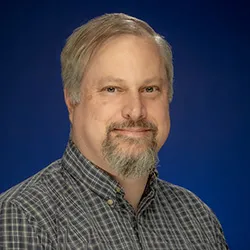
Jeremy Dodsworth
Contact
Education
B.S. in Bacteriology, Biochemistry and Statistics, University of Wisconsin-Madison Ph.D. in Microbiology, University of Washington, Seattle Postdoc in Geomicrobiology and cultivation-independent genomics, University of Nevada, Las Vegas
Courses/Teaching
BIOL 2101 - Principles of Biology
BIOL 3200 - Microbiology
BIOL 3820 - Microbial Ecology
BIOL 5260 - Genomics
Research and Teaching Interests
Microbiology of geothermal springs. Beautiful and fascinating in their own right, hot springs offer good opportunities to study several frontiers in microbiology. High temperature impacts both microbial community composition and ecosystem function. While microbes that inhabit geothermal environments are typically distinct from those present at lower temperatures, some hot springs, including many in the US Great Basin region, are dominated by microbes that represent entire class- and phylum-level lineages with no cultivated representatives (so-called 'microbial dark matter'). Also, some key biogeochemical processes, such as photosynthesis (carbon fixation), transformations in the nitrogen cycle, and lignocellulose degradation, appear to break down or be altered as temperature increases, but the reasons for these changes are not clear. Because thermal environments generally tend to host relatively few taxa in comparison to non-thermal systems, hot springs in the US Great Basin represent good natural laboratories (relatively simple yet tractable systems) to study 'microbial dark matter' groups and their possible roles in carbon, nitrogen, and other nutrient cycles. Potential research projects will focus on understanding ecology in geothermal springs and the physiology of novel thermophiles using a combination of field studies, single-cell and community genomics techniques, cultivation efforts, and heterologous expression approaches, involving collaborations with researchers elsewhere in the US and in China.